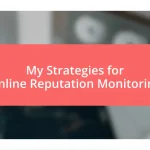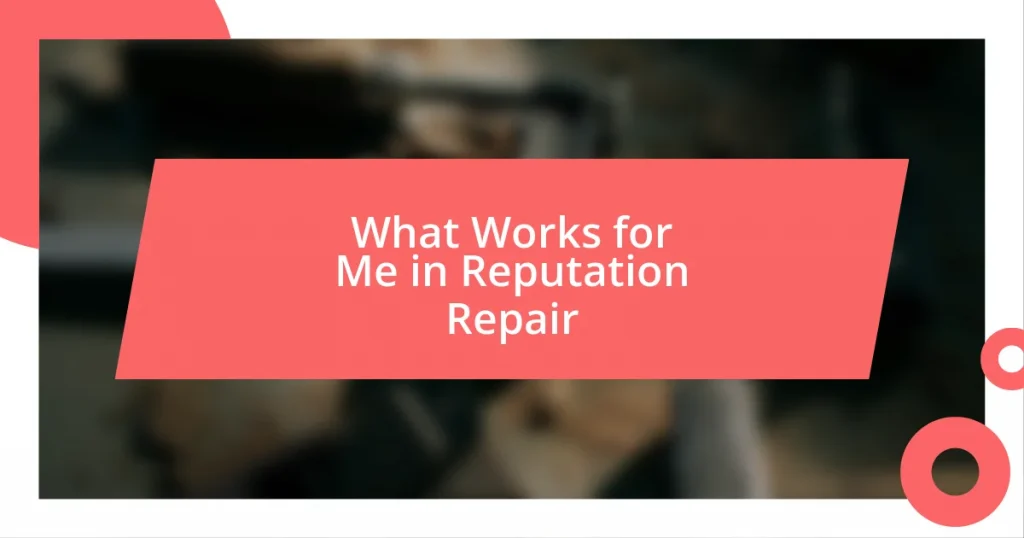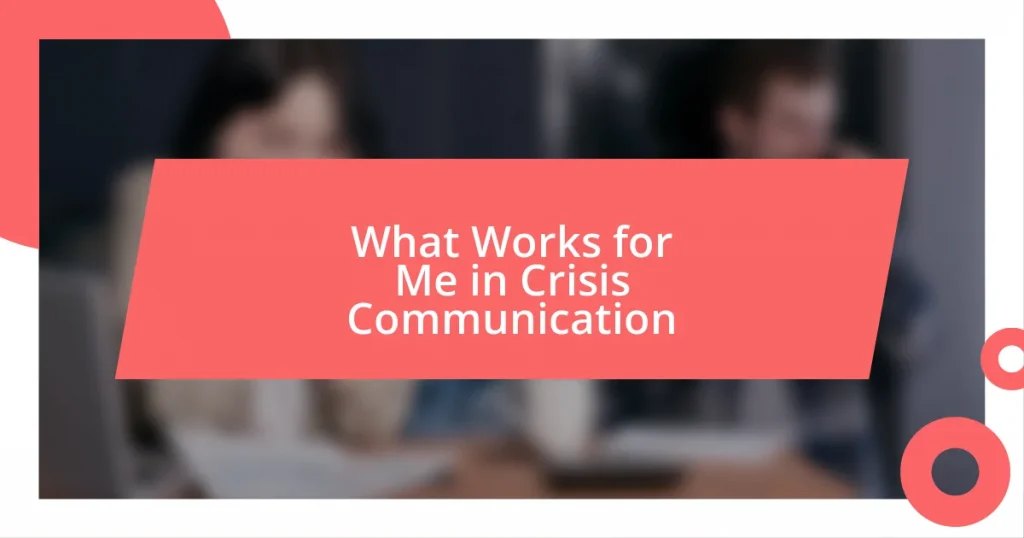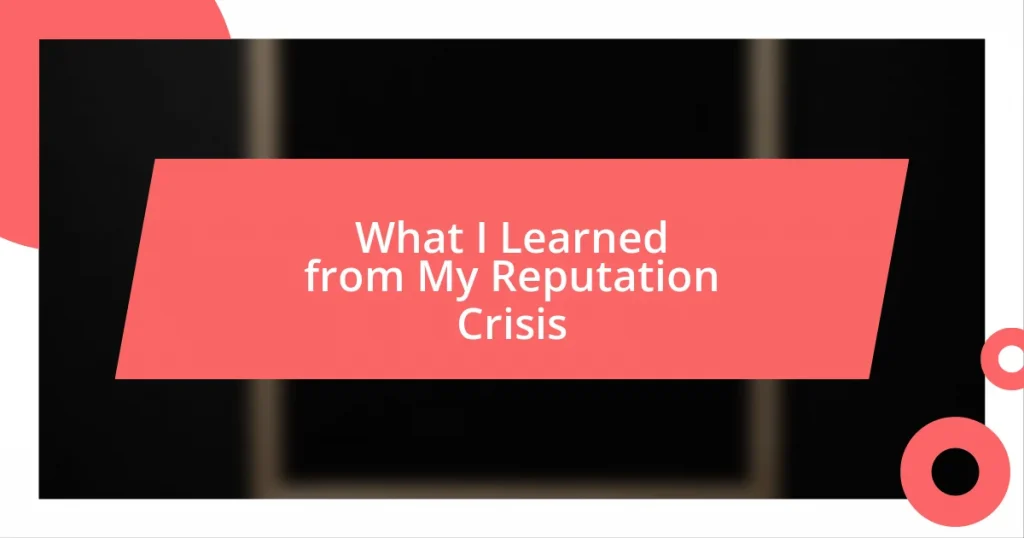Key takeaways:
- Clearly define partnership objectives using SMART goals to ensure alignment and measurable success.
- Regularly assess key success metrics and communication effectiveness to foster transparency and trust among partners.
- Continuously review partnership satisfaction levels and adjust strategies based on feedback to promote ongoing improvement and adaptability.
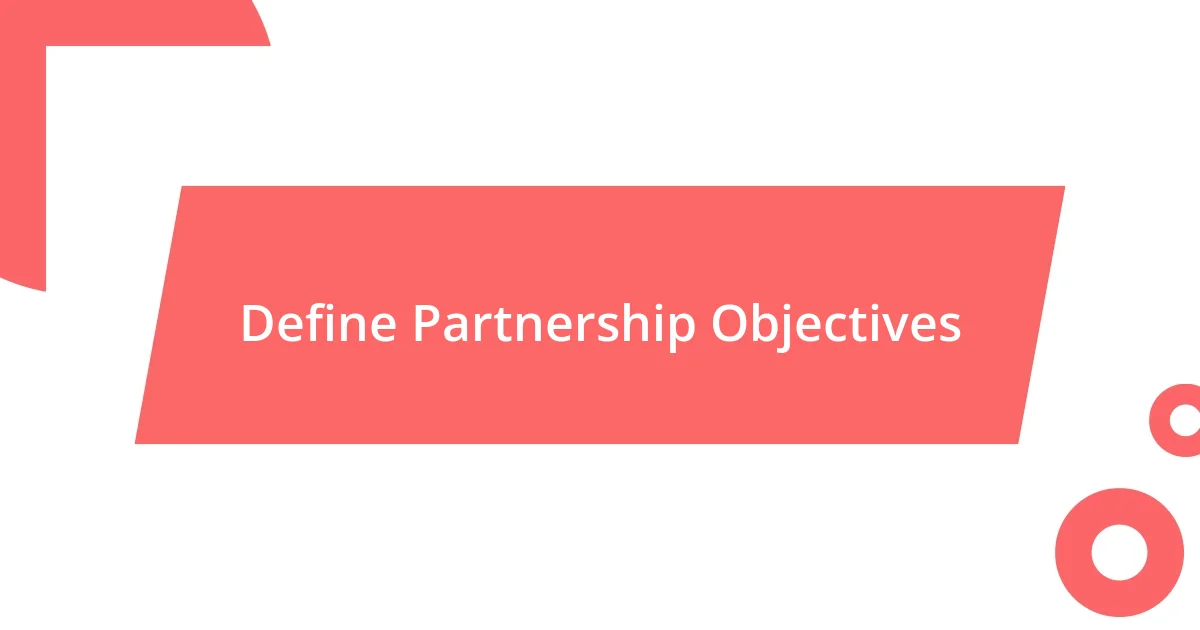
Define Partnership Objectives
Defining partnership objectives is crucial for a successful collaboration. I once worked on a project where we didn’t clearly outline our goals, which led to misunderstandings and frustration. If we had taken the time to articulate what each party wanted upfront, we could have avoided a lot of unnecessary tension.
Think about it: How often have you jumped into a partnership only to realize later that your visions were misaligned? Early in my career, I partnered with a fellow entrepreneur whose idea of success was vastly different from mine. By clearly defining what we each aimed to achieve—whether it was revenue, brand awareness, or community outreach—we could have found common ground and created a much more fulfilling partnership.
Moreover, I learned that objectives should be specific and measurable. In another collaboration, we established SMART goals (Specific, Measurable, Achievable, Relevant, Time-bound), and that made all the difference. Each milestone we hit felt like a celebration, reinforcing our commitment and driving us toward a shared vision. Have you ever had a partnership where you didn’t set those benchmarks? It often leaves everyone feeling a bit lost.
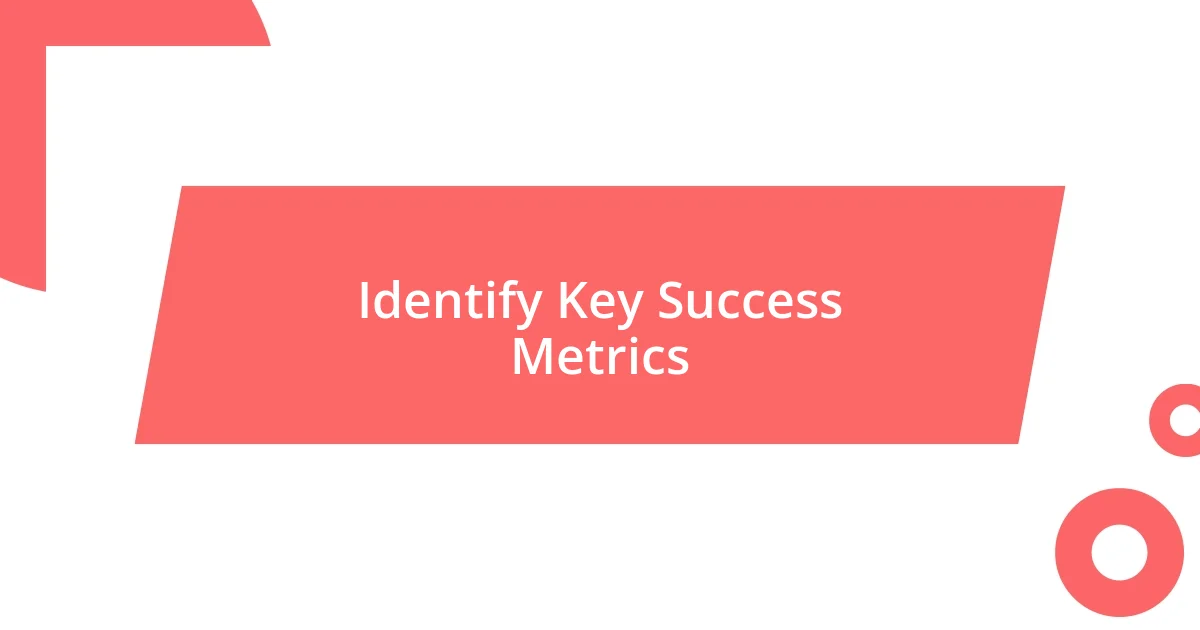
Identify Key Success Metrics
Identifying key success metrics can truly transform a partnership from a simple collaboration into a thriving alliance. In my own experience, we once tracked metrics such as customer engagement and revenue growth, and the clarity that brought was astounding. Each metric acted as a compass, guiding our decisions and showcasing our progress in real-time.
Think about the impact of choosing the right metrics. When I collaborated on a marketing project, focusing on conversion rates instead of vanity metrics like website visits changed everything. Conversion rates provided tangible proof of our efforts, helping us pivot quickly when something didn’t resonate with our audience. It was a revelation to see how effective metrics can steer a project toward success while keeping everyone aligned.
In evaluating partnerships, it’s essential to regularly revisit these metrics together. During a joint initiative I was a part of, we held monthly check-ins to assess our performance against our set benchmarks. This not only fostered transparency but also built trust, as we celebrated successes and discussed areas needing improvement. What metrics do you think would best serve your partnerships?
| Metric | Description |
|---|---|
| Customer Engagement | The level of interaction between the partnership’s offerings and the target audience. |
| Revenue Growth | Increase in income generated from partnership activities over time. |
| Conversion Rates | The percentage of audience that takes a desired action, such as making a purchase. |
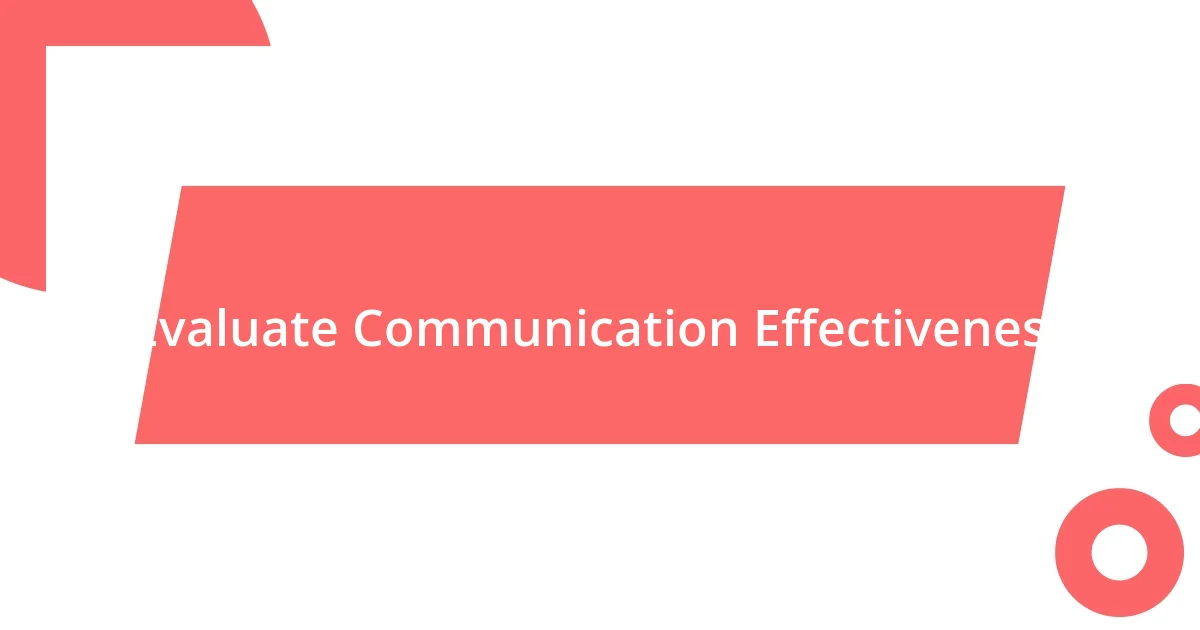
Evaluate Communication Effectiveness

Evaluate Communication Effectiveness
Evaluating communication effectiveness in a partnership is a lens through which the collaboration can be fully understood. I recall a time when my team and our partner operated on different communication styles. My straightforward, direct approach clashed with their preference for more nuanced discussions. Recognizing these differences early on could have saved us countless hours of confusion and frustration.
I’ve learned that proactive communication fosters a collaborative spirit, enabling all parties to feel valued and heard. Here are some valuable aspects to consider when evaluating how well communication is functioning in a partnership:
- Frequency of Updates: Are all partners receiving timely updates on progress and changes?
- Clarity of Messages: Are the objectives and tasks clearly articulated, leaving no room for ambiguity?
- Feedback Mechanisms: Is there an established process for providing and receiving constructive feedback?
- Active Listening Practices: Are all partners genuinely listening to each other, encouraging open dialogue?
- Adaptability to Different Styles: Are team members adjusting their communication styles to accommodate each other’s preferences?
In my journey, I noticed that fostering an environment of open communication not only alleviates misunderstandings but also builds a stronger sense of camaraderie among partners. One memorable project involved weekly calls, where we openly discussed challenges and celebrated small wins. The result was a more cohesive team, a solidified plan, and a genuine investment in each other’s success. How are you approaching communication in your partnerships?
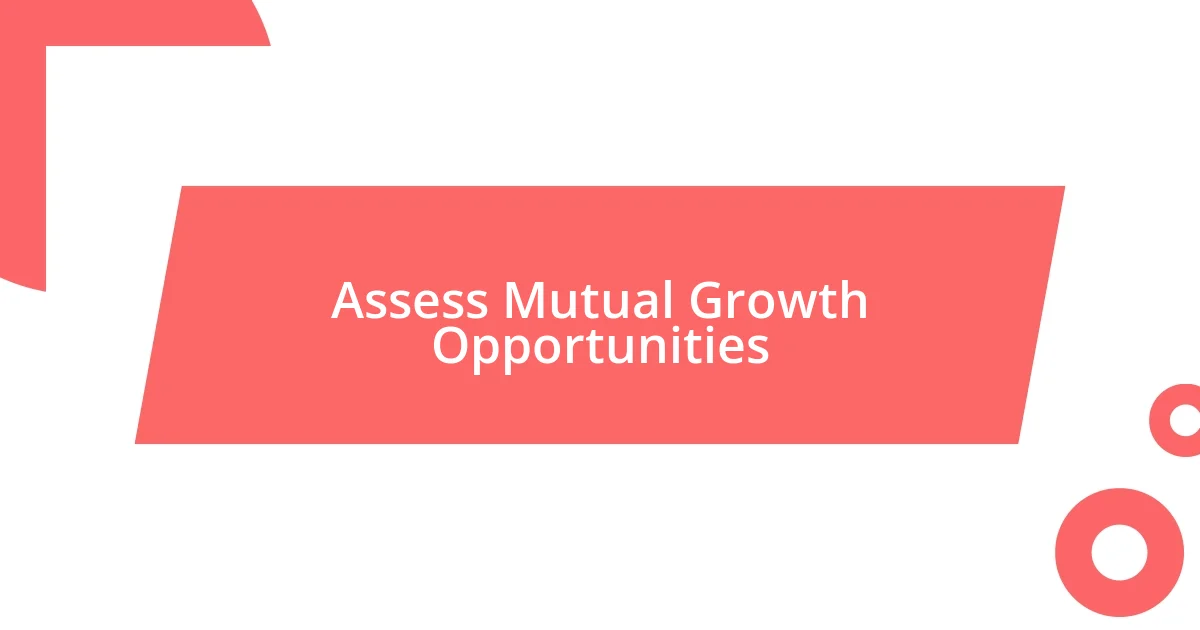
Assess Mutual Growth Opportunities
Assessing mutual growth opportunities is an essential step toward ensuring both partners flourish. I remember a time when my colleague and I were navigating a joint venture. We took a step back and asked ourselves, “How can this project benefit both of us in the long run?” By identifying shared goals like expanding our market reach and enhancing our product offerings, we not only deepened our collaboration but also sparked innovative ideas that drove success.
Exploring these opportunities often leads to surprising insights. For instance, during a partnership with a tech startup, we discovered an overlapping audience that neither of us had fully tapped into. This realization prompted us to devise a co-marketing strategy, which created a win-win situation. Have you ever unearthed a mutual growth opportunity that transformed your partnership? It’s that kind of discovery that can reignite passion and commitment in collaborative efforts.
Additionally, I’ve found that engaging in brainstorming sessions can be incredibly fruitful for both partners. It’s fascinating how diverse perspectives can lead to groundbreaking ideas! I once facilitated a creative workshop that brought both teams together. The synergy we created resulted in a standout campaign that not only met our individual goals but surpassed our expectations. How often do you make time to explore opportunities for mutual growth in your partnerships? Taking the time to do this can deepen relationships and unleash untapped potential.
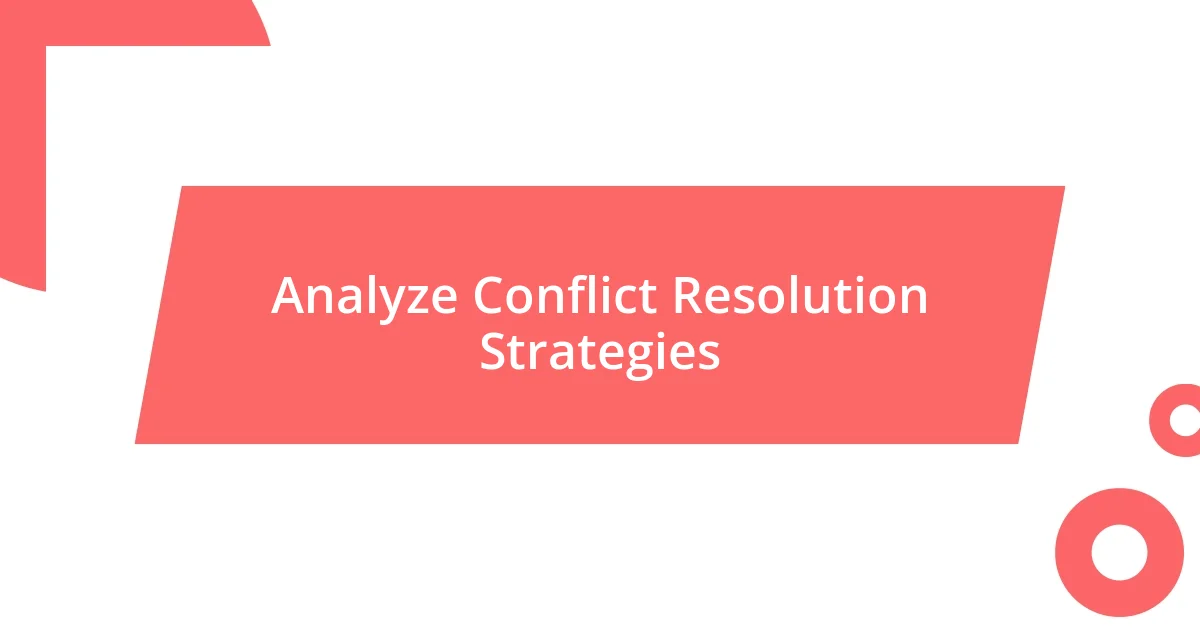
Analyze Conflict Resolution Strategies
Conflict resolution strategies are vital for any partnership’s success, as they determine how well parties can navigate disagreements. I’ve had my share of conflicts that seemed daunting at first. For instance, during a collaborative project, differing opinions on project direction led to tension. Instead of letting the situation fester, we employed a strategy of open dialogue. This approach not only helped us to express our concerns but also fostered understanding and paved the way for compromise.
I truly believe that employing a structured approach to conflict resolution can significantly impact the partnership. One technique I find particularly effective is the interest-based approach. This involves focusing on underlying interests rather than positions, which encourages finding solutions that satisfy everyone involved. I recall a situation where two teams were at an impasse over resource allocation. By identifying each team’s specific needs and the reasons behind them, we were able to create a shared resource pool that balanced the workload and improved collaboration. It’s remarkable how a little transparency can shift perspectives!
It’s worth contemplating: how often do you take the time to reflect on the conflict resolution strategies in your partnerships? I’ve learned that the effectiveness of these strategies can make or break a relationship. Emotional intelligence plays a huge role here—it’s essential to recognize the feelings at play. Letting disputes escalate only leads to resentment; instead, I emphasize addressing conflicts early and empathetically. This way, teams are not just working to resolve issues but also building trust and respect, ultimately strengthening the partnership.
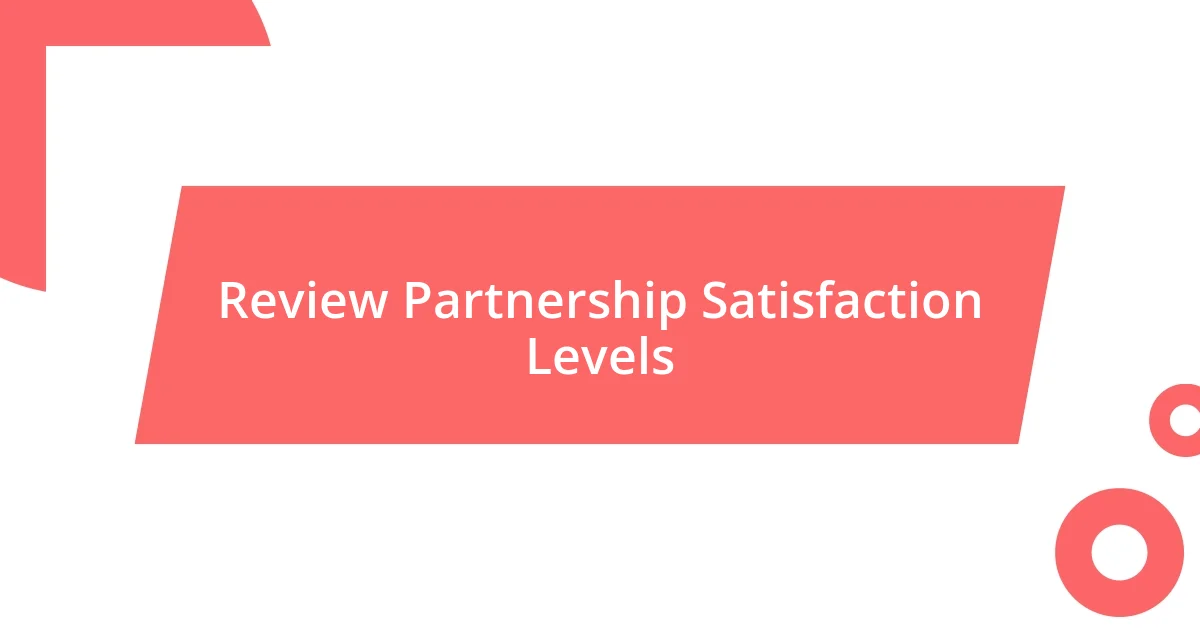
Review Partnership Satisfaction Levels
Reviewing partnership satisfaction levels is a crucial step in understanding the health of any collaboration. I’ve found that a simple survey can open up a treasure trove of insights. For instance, during a partnership evaluation last year, I conducted anonymous feedback sessions. The candid responses revealed unspoken concerns and areas for improvement that we had overlooked, dramatically shifting how we approached our relationship. Have you ever received feedback that completely changed your perspective on a partnership?
In my experience, regular check-ins go a long way. I recall a quarterly review meeting with a long-term partner that turned into an enlightening dialogue. We explored not just project outcomes but the emotional satisfaction derived from our collaboration. That moment was pivotal; it highlighted how our alignment in vision was just as important as tangible results. Are you making it a habit to discuss satisfaction levels, or do you find that it’s often brushed aside?
Lastly, I believe that it’s essential to recognize the emotional dimensions in partnership satisfaction. For instance, when one partner feels undervalued, it can create an imbalance in the collaboration. In a previous project, I noticed one teammate becoming increasingly disengaged, which worried me. A heartfelt conversation uncovered feelings of being sidelined. Addressing these emotions not only restored balance but also revitalized our teamwork. It begs the question: how comfortable are you discussing not just the numbers, but also the feelings behind your partnership? Listening to each other can produce insights that numbers alone cannot reveal.
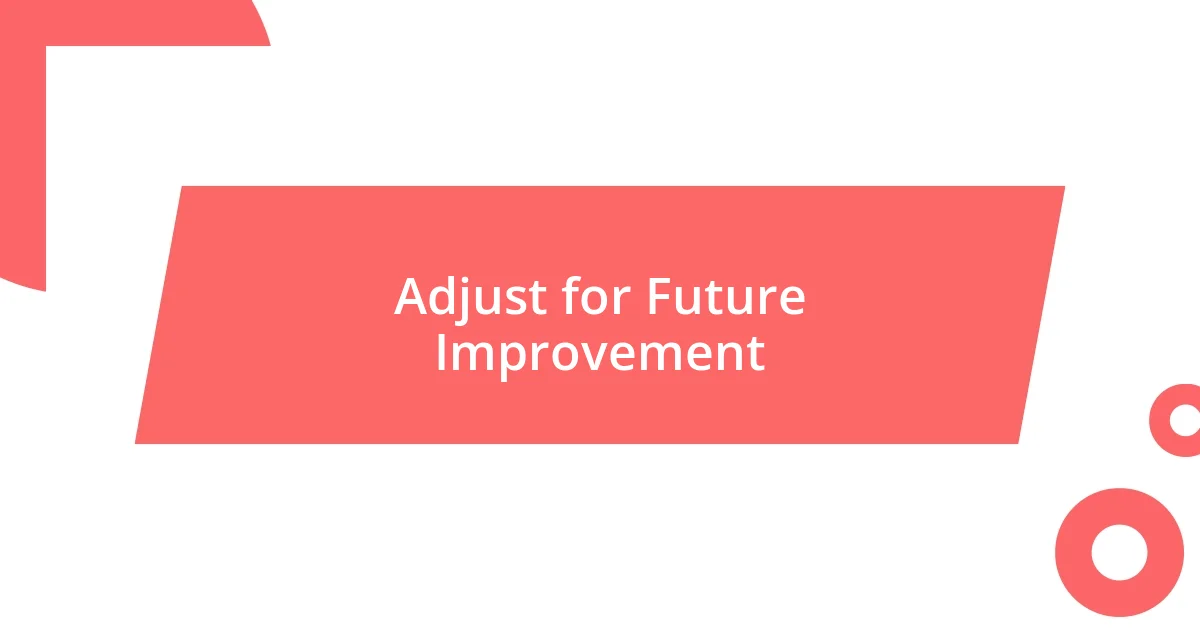
Adjust for Future Improvement
One of the most impactful moments in my partnerships has been when I recognized the need to adjust strategies based on feedback for future improvement. I remember a situation where we implemented a project management tool but quickly realized it wasn’t meeting our collective needs. After gathering insights from the team, it became clear we needed a platform with more collaborative features. Taking the time to really listen to my colleagues transformed not only our workflow but also deepened our trust in one another.
I’ve learned that improvement isn’t a one-time effort; it’s an ongoing process. After a major project, I like to hold a reflective session with my partners. During one such debrief, we acknowledged areas where we had stumbled, like communication breakdowns and misaligned expectations. Sharing our thoughts openly made it clear that these challenges were common and not personal failures. How often do we take pauses in our busy schedules to reflect on what we could do better in the future? I find that making space for this dialogue is just as crucial as the original planning stages.
I’ve realized that adaptability is key to any successful partnership. For instance, there were times I stubbornly clung to a strategy, even when it wasn’t yielding results. However, a gentle nudge from a partner led me to rethink that approach. I now firmly believe in the value of flexibility. How do we adjust our sails when the winds of collaboration change? Embracing change, being willing to pivot, and staying attuned to each partner’s perspective have helped me cultivate stronger, more resilient relationships.







